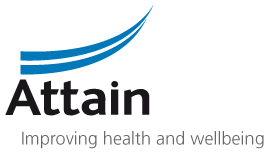There has been no shortage of news stories highlighting the pressure in our Accident and Emergency (A&E) departments and no more so than now as we head into winter with the knowledge that across the country A&E’s are not meeting their performance targets.
As reported in BBC Newsnight recently and the Nuffield Trust has shown that we have experienced the worst waiting times over this summer since the 4 hour waiting time target was introduced in 2004. The number of ‘trolley waits’ (i.e. those patients waiting more than 12hrs) has doubled since this time last year to 2,591 across England and whilst this number is small in comparison to the total number of A&E episodes (2.14 million in the month of September 2019) it is too many. These long trolley waits and the general decline in the 4hr waiting time target doesn’t bode well for this year’s winter experience for our patients and our staff and doctors are reporting that they are ‘running out of resilience’.
The question then is what is the answer? Is there a single silver bullet or is it down to under funding?
Clearly the answer is that there isn’t one answer. There are multiple potential answers and it won’t be the same assortment of answers in every locality or system. The elements to be considered are considerable and varied. They include flow in and out of UEC, alternative care options including self-care, access to services include self-serve using online tools, diminishing / changing workforce, understanding of demand and capacity and availability of skills and tools to effectively model this.
Integration of services as a step forward
Of all these issues a really key element is controlling the flow into UEC and ensuring only those people who need A&E, attend A&E, releasing capacity within A&E’s to do what only they can do. This clearly can have an impact on other services which is why dynamic modelling to anticipate that channel shift is so important. The ability to forecast gives commissioners and service providers the opportunity to work together so that commissioning decisions can be made in a timely way to alter the provision to respond to this switch. All of this requires more integration of services and providers and commissioners working together to do this – no small challenge.
‘Whole system change’ and innovation
So, how do system and service leaders make sense of this and start to make a difference for their patients? It is complex with multiple moving parts and a situation where a change in one aspect will have a definite impact in another. It is also very clear that although all positive change is welcome, small changes will not make the impacts that are required to address the real significant and long standing challenges talked about in the BBC Newsnight and Nuffield report referred to earlier. To do this ‘whole system’ change, to go in the desired direction requires system leadership, thinking and innovation and in all honesty boldness and bravery. So how do we achieve this?
At Attain, we have a rich resource in our people who have worked with systems and are system thinkers who can help cut through all of this. We have a breadth of knowledge and experience in Urgent and Emergency Care (UEC) as providers, commissioners, clinical leaders, policy makers, commercial specialists, analysts, modellers and strategic development specialists which make us well placed to offer a wide range of support in this area.
Developing a sustainable Urgent and Emergency Care service
We have significant experience in clinical service reviews across single and multiple organisations reviewing service against their ability to deliver against their service specification and contracts. We do this by identifying through key lines of enquiry, what is working and what is not, conducting more intensive analysis and review where issues are discovered. Our strategy and service transformation teams can identify causes and work alongside your teams to develop options and models of care to address and develop the sustainable UEC service required.
Our teams are experienced in not only identifying new models of care, ways of working and ways to better utilise resource but in implementing and mobilising the services they have designed and developed. In addition, our commercial team are able to help develop the right contractual and financial models and have a deep understanding of associated Regulations which will enable CCGs to integrate services effectively to achieve the desired outcomes.

